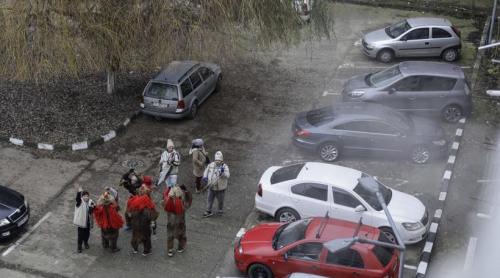
The Danube Delta Biosphere Reserve covers many areas, but the bird colonies seem to be the most valuable of all. There are permanent colonies and temporal colonies and they all represent some of the most wanted areas by the ones that come here to observe and research. Unfortunately, the hunters look for them as well.
There are more than 100 registered bird colonies in the Danube Delta Biosphere Reserve. Most of these colonies are mixed, like the ones in which one meets cormorants (phala crocoracidae), aigrettes (Egretta) and spoonbills (Spatula clypeata) cohabitating, but there are also some that are formed of only one specie. For this last category we remind the most known of them, the one from Rosca-Buhaiova, where lives the greatest colony of pelicans (Pelecanus onocrotalus) in Europe. There are colonies almost everywhere in the Delta, and the ones counting the most members are at Uzlina, Nebunu, Sacalin-Zatoane, Purcelu or in the South of the Reserve, at Grindul Lupilor or at Grindul Chituc. Fortunately, these colonies arenât on any map, and the ones that want to observe are offered only few information about them, in order to protect the species. This happens in the nesting period, especially. HUNTING IS ALLOWED The tourists that want to go for bird-watching are allowed to go to these colonies with motor boats, they are allowed to take pictures and film them, but they are also allowed to hunt in the areas near the colonies. In September 2003, before deciding the luce prohibition, the Ministry of Agriculture released an ecological decree to forbid hunting in the Danube Delta. One month later, following all kinds of pressures, the decree was suspended, so hunting birds is still allowed in the Danube Delta. There are only a few species that are protected. At that time, the measure didnât have the support of the Romanian scientists, but of the Birdlife International organization and of the British Royal Society for Birdsâ Protection. No one came to help the Administration of the Danube Delta Biosphere Reserve (ARBDD) that wanted to stop the interdiction of the decree. BIRDS FROM THE POLAR CIRCLE There are few people knowing that there are species of birds that spends their winters in the Danube Delta, away from their birthplaces, the North Polar Circle or Siberia. In the areas in which they live for the summer, the temperature starts to get very low in October and November, and this is why these birds choose to spend their winters in the Danube Delta, where they stay until the half of March. It is the case of the winter swan (Cygnus olor), that replaces the summer swan, but also the case of several polar ducks and gooses. The most valuable specimen is the red-necked goose (Branta ruficollis). Approximately 95% of the world population of this specie comes in the Reserve for the winter, near the seaside lakes especially. BIRD RESEARCHING There are signs of the research of the birds colonies in the Danube Delta indicating the nineteenth century, but the first professional monitoring took place after the Delta became a Biosphere Reserve and after the initiation of ARBDD, at the beginning of the 90s. The management plan of the Reserveâs administration, elaborated in 1995, got some programs tied up. They helped for the monitoring of the bird colonies in the Delta. This is the management plan that the Minister of Environment and Watersâ Administration, Sulfina Barbu, was asking from the Reserveâs administration at the beginning of the year, saying that it didnât exist. Besides disputes and interests, as well as legislative deficiencies, bird-watching, together with fishing, remains the number one activity of the tourists that visit the Danube Delta.
Citește pe Antena3.ro













